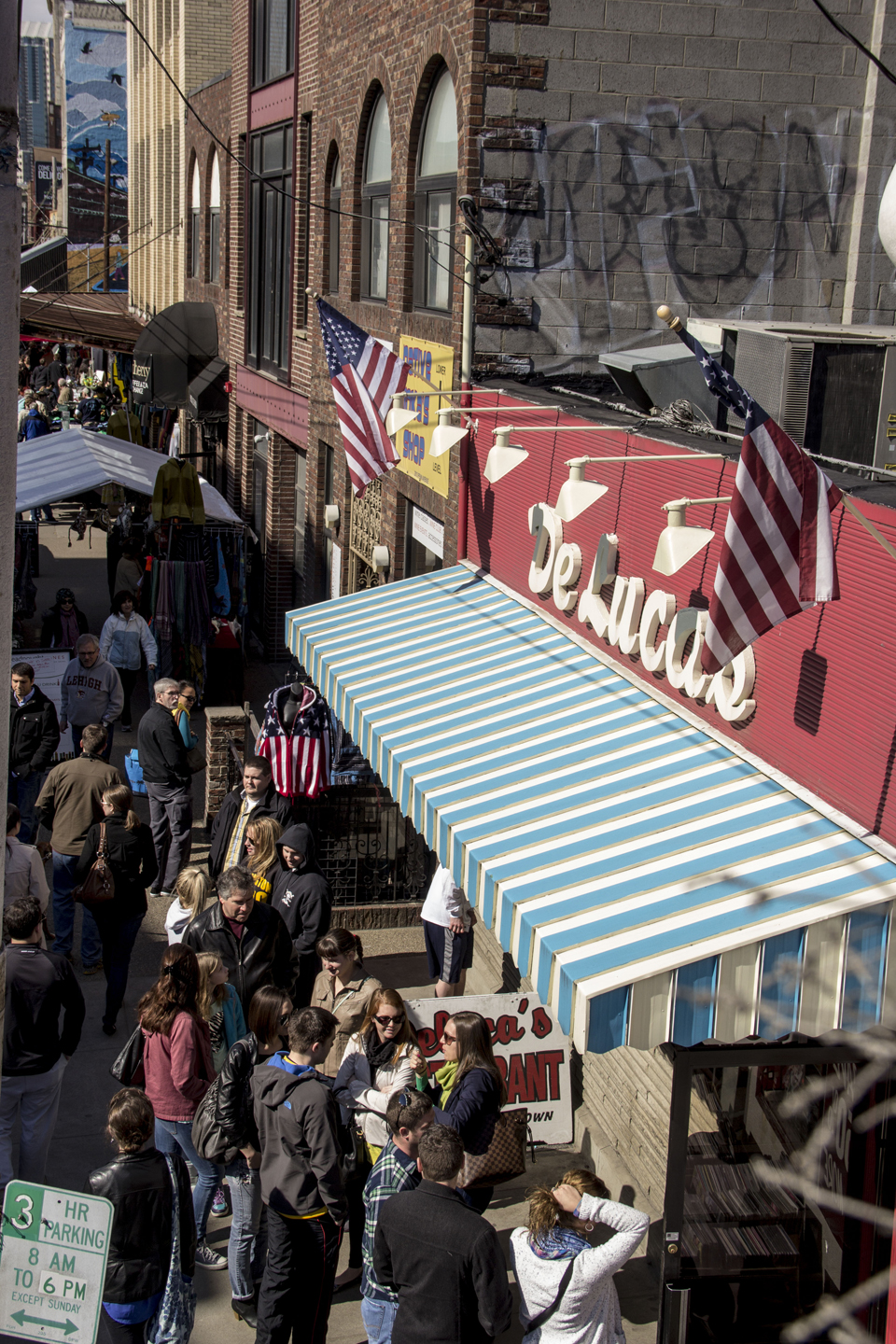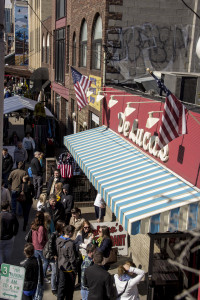

By Julian Routh | News Editor
Mayor Bill Peduto’s wishes for more housing in Pittsburgh may come true soon, as residential projects begin to make progress in the Strip District and South Side.
The Strip District will see five new residential developments in the coming years, according to Neighbors of the Strip executive director Becky Rodgers.
Rodgers said one development, an extended-stay Homewood Suites hotel, started Monday, a “quick response” to the mayor’s housing requests. The eight-story, 150-room hotel will be located next to Lidia’s restaurant on Smallman Street. Rodgers said she has high expectations for the hotel, which will be “hopefully” finished in a year.
“It will get people out and about in the neighborhood using the restaurants and stores,” Rodgers said.
Other projects underway in the Strip are a 55-apartment development by Schreiber Real Estate on the 1100 block of Smallman Street and the conversion of the Federate Cold Storage building to an apartment building with 144 units, courtesy of the Sampson Morris Group. The group is also planning an 80-foot wind turbine to assist the neighborhood in greening.
The development of the hotel and apartment buildings are “well under way,” Rodgers said.
Two other Strip District residential projects are in earlier stages of developments. A 299-unit apartment building called Three Crossings on Railroad Street between 26th and 27th streets is being pushed forward by Oxford Development Co. Also, a husband and wife in the neighborhood have contacted an architect to conceptualize 10 town homes, according to Rodgers.
Rodgers said there is more happening in the Strip now than ever before to attract people to the neighborhood.
Once they move in, Rodgers expects changes.
“A combination of the residential development paired with the commercial [development] is going to build a strong neighborhood economy, and hopefully build up the core of the Strip on Penn Avenue,” Rodgers said.
On the other side of the city, South Side is anticipating similar developmental progress. Jonathan Growall, a member of the South Side Chamber of Commerce board, said the best is yet to come in the South Side.
“Residential ocupancy rates are very high in our blue chip neighborhoods like the South Side,” Growall said. “That is usually an indicator we can add more. Student populations continue to rise, many former students are making our fine city their permanent home and many families and retirees are doing the same.”
More people will soon be able to call South Side their home if a group of proposed housing developments are finished. The first, a 262-unit apartment complex in South Side Works, was pushed back by developer Village Green because of high construction costs.
An eight-story building housing 173 apartments near Sidney and Hot Metal streets is also on hold because of funding complications. A residential project on 18th Street by Oxbridge Development is waiting on zoning variances.
A spike in developmental projects in neighborhoods like the Strip District and South Side is what Peduto recently called for, and what he outlined in one of his 100 policy papers during his campaign. The paper, titled “Pittsburgh Development Roundtable: Cutting Red Tape To Spur Development,” detailed Peduto’s plan to entice developers with “clear communication, an easy to understand process, and defined expectations up front.”
Rodgers understands the mayor’s pleas.
“His call for housing is going to be heard,” Rodgers said.
The growth in the city’s residential sector over the years is evident in the Pittsburgh Downtown Partnership’s most recent State of Downtown Pittsburgh report, which cites 632 additional housing units that went online between 2010 and the end of 2012.
Between 2000 and 2010, the U.S. Census recorded a 21.3 percent increase in population in Greater Downtown.
For the city to reach its full potential, though, it needs more residents, Growall said.
“More residents equals better services, amenities, transportation and all the good stuff you associate with a world class city and a world class neighborhood like the South Side,” Growall said.




